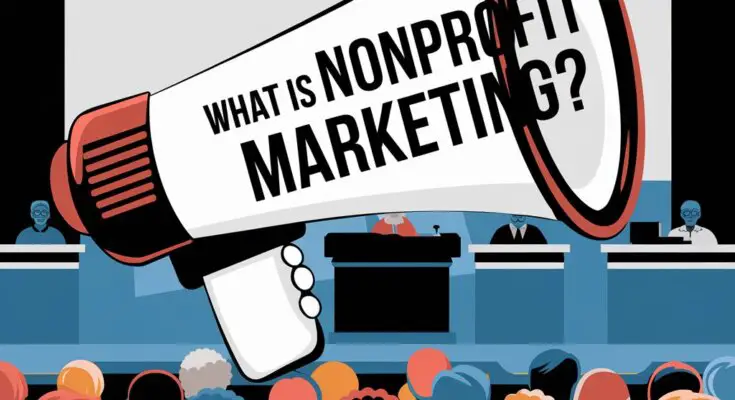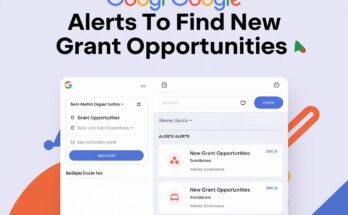As the landscape of nonprofit marketing continues to evolve, organizations must adapt to new trends and strategies to effectively reach their audience and drive their mission forward. In 2024, the top 10 nonprofit marketing strategies will not only enhance visibility but also strengthen community engagement, foster relationships, and ultimately lead to increased support.
Whether your nonprofit is just starting out or looking to revitalize its marketing efforts, these strategies will provide actionable insights for achieving success.
1. Embrace Storytelling
Storytelling is a powerful tool that connects people emotionally to your cause. By sharing real stories of individuals impacted by your nonprofit, you can create a deeper connection with your audience.
In 2024, storytelling will become even more vital as organizations seek to differentiate themselves in a crowded marketplace.
Example: Consider a nonprofit focused on providing clean water to communities in need. Instead of simply stating statistics about water scarcity, share the story of a family who received clean water access through your organization. Describe how it changed their daily life, improved their health, and provided opportunities for education and growth. This narrative approach not only highlights your impact but also humanizes your mission.
2. Leverage Social Media for Engagement
Social media continues to be a game-changer for nonprofits in 2024. Platforms like Facebook, Instagram, and Twitter allow organizations to engage with their audience in real-time, share updates, and promote campaigns.
To maximize your reach, it’s essential to create engaging content that resonates with your followers.
Example: Use Instagram Stories to showcase behind-the-scenes moments from your events or daily operations. Encourage followers to interact through polls or questions. Share success stories in a visually appealing format, utilizing infographics and videos that highlight your work. The more engaging your content, the more likely it is to be shared, expanding your reach and influence.
3. Invest in Email Marketing
Despite the rise of social media, email marketing remains one of the most effective ways to reach your audience directly.
In 2024, personalized email campaigns will be crucial for fostering relationships with donors, volunteers, and supporters. Use segmentation to tailor your messages based on the recipient’s interests and past interactions.
Example: If a donor has previously supported your education initiatives, send them updates and stories related to that specific program. Include compelling visuals and a clear call to action, such as inviting them to an upcoming fundraising event. Regular newsletters can also keep supporters informed about your organization’s achievements and upcoming opportunities.
4. Optimize Your Website for User Experience
In today’s digital age, a well-designed and user-friendly website is essential for any nonprofit. Your website serves as the online face of your organization, and it’s often the first point of contact for potential supporters. In 2024, ensure your website is optimized for mobile devices, easy to navigate, and visually appealing.
Example: Make sure important information, such as your mission statement, programs, and donation options, is easy to find. Use clear calls to action on every page, guiding visitors towards actions like donating, signing up for newsletters, or volunteering. Consider incorporating a blog to share updates, success stories, and educational content related to your cause.
5. Utilize Video Content
Video content is increasingly dominating the online space, making it a crucial marketing strategy for nonprofits in 2024. Videos can effectively convey your message, showcase your work, and engage your audience more dynamically than text alone.
Example: Create short, impactful videos that highlight the stories of those you serve. These could include testimonials, event highlights, or educational content about the issues your organization addresses. Share these videos on social media, your website, and in email campaigns to enhance engagement and reach.
6. Host Virtual Events
The rise of digital platforms has made hosting virtual events more accessible and cost-effective. In 2024, nonprofits can leverage online events to reach a wider audience while minimizing expenses. Virtual events can include webinars, online workshops, or fundraising galas.
Example: Organize a virtual fundraising gala featuring guest speakers, live performances, and an auction. Promote the event across your marketing channels, encouraging attendees to invite friends and family. Use the opportunity to share stories, showcase your work, and engage participants in your mission.
7. Collaborate with Influencers
Influencer marketing is a powerful strategy that can amplify your reach and credibility in 2024. Collaborating with individuals who have a strong following in your community or sector can help raise awareness about your nonprofit and its mission.
Example: Partner with local influencers or community leaders who are passionate about your cause. Have them share your message on their platforms, attend your events, or even create content about your work. This collaboration can introduce your nonprofit to new audiences and generate valuable engagement.
8. Focus on Data-Driven Decisions
In an increasingly competitive landscape, it’s essential for nonprofits to rely on data-driven decisions to optimize their marketing strategies. By analyzing data from your campaigns, you can identify what works, what doesn’t, and where to allocate your resources for maximum impact.
Example: Utilize tools like Google Analytics to track website traffic, user behavior, and conversion rates. Review your email marketing metrics to assess open rates and click-through rates. Use this data to refine your messaging, target specific audiences, and improve your overall marketing strategy.
9. Develop Strategic Partnerships
Building strategic partnerships with other organizations can help amplify your efforts and expand your reach. Collaborating with like-minded nonprofits, businesses, or community groups can create mutually beneficial opportunities.
Example: Partner with a local business for a joint fundraising campaign or awareness event. This collaboration can leverage each organization’s network and resources, increasing visibility and engagement. You can also consider hosting joint workshops or educational events that benefit both organizations and their audiences.
10. Create a Strong Brand Identity
A well-defined brand identity is crucial for nonprofits looking to stand out in a crowded market. In 2024, your brand should clearly communicate your mission, values, and the impact of your work. Consistency across all marketing channels is key to building recognition and trust.
Example: Develop a cohesive visual identity, including a logo, color palette, and typography that reflects your mission. Use this branding consistently across your website, social media, email campaigns, and promotional materials. Share your organization’s story, mission statement, and values to foster a strong emotional connection with your audience.
A Story to Inspire
Let’s take a moment to reflect on the story of “Hope for Tomorrow,” a small nonprofit dedicated to empowering young girls through education in underserved communities. Faced with limited resources and a lack of visibility, the organization decided to embrace storytelling as a core marketing strategy.
They began sharing the inspiring stories of girls who overcame challenges to pursue their dreams. With each story, they highlighted the direct impact of their programs, showcasing not just statistics but the human element behind their mission.
This approach resonated with their audience, leading to increased engagement on social media and more donations than ever before.
By investing in their brand identity, creating visually appealing content, and leveraging social media for outreach, “Hope for Tomorrow” transformed its marketing efforts. They collaborated with local influencers and hosted virtual events that brought together community members and supporters, raising awareness and funds to support their mission.
As a result, the organization not only increased its funding but also fostered a community of passionate advocates who were excited to share their stories and help others. This journey exemplifies how a nonprofit can successfully navigate the marketing landscape by focusing on storytelling, engagement, and strategic partnerships.
Conclusion
As we navigate through 2024, it’s evident that nonprofits must embrace innovative marketing strategies to stand out in a competitive landscape.
Are you ready to elevate your nonprofit’s marketing efforts this year?
Subscribe to the Nonprofit Navigators Newsletter for expert tips, resources, and insights tailored for the nonprofit sector. Gain access to job and grant opportunities, exclusive webinars, events, and more.
Additional Resources:
- The Small Business’s Guide to Winning Grants
- Request for Proposal Success: How to Write Proposals That Win
- The Ultimate Guide to Federal Grant Applications: Techniques for Success
- Digital Marketing for Nonprofits: A Comprehensive Guide to Boosting Your Impact Online
- Mastering Online Fundraising: A Nonprofit’s Guide to Digital Success
Tagged




